
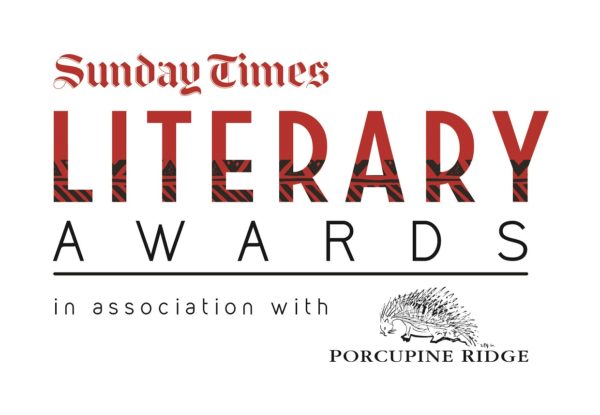
Five books have been named on the shortlist for the Alan Paton Award for non-fiction. They are: Sean Christie’s Under Nelson Mandela Boulevard: Life Among the Stowaways; Christa Kuljian’s Darwin’s Hunch: Science, Race, and the Search for Human Origins; Greg Marinovich’s Murder at Small Koppie: The Real Story of the Marikana Massacre; Dikgang Moseneke’s My Own Liberator: A Memoir; and Steven Robins’ Letters of Stone: From Nazi Germany to South Africa.
The R100,000 Alan Paton Award for non-fiction is organised by Sunday Times Literary Awards in association with Porcupine Ridge. It is often referred to as South Africa’s most prestigious book award.
Books Live describes the list as “a diverse range of subjects and historical eras: from human origins to the Marikana of just three years ago, from Cape Town today to wartime Berlin.” The books, said the chair of the judges Pippa Green, “raise critical questions about our past, present and future. The big question being asked is who are we?”
Here are the five books. The accompanying synopses are from their publishers.
*
 Under Nelson Mandela Boulevard: Life Among the Stowaways, Sean Christie (Jonathan Ball Publishers).
Under Nelson Mandela Boulevard: Life Among the Stowaways, Sean Christie (Jonathan Ball Publishers).
Part memoir, part ethnography, Under Nelson Mandela Boulevardis journalist Sean Hunter Christie’s account of time spent amongst the Tanzanian stowaways who live rough under the Nelson Mandela Boulevard flyover, at the foot of Cape Town.
After a year living in South Africa’s most unequal city, the young Zimbabwean is introduced to serial stowaway Adam Bashili, through the photographer David Southwood. This encounter changes everything. Adam introduces Christie to the extraordinary world of the “beachboys,” a multi-port, fourth generation sub-culture of young men from the slums of Dar es Salaam, who came to South Africa with the aim of stowing away on ships bound for other continents.
Under Nelson Mandela Boulevard presents Cape Town as it has not yet been seen: as a series of desperate social margents and cloying controls, but also of unbelievable and somehow hopeful beliefs and survival strategies.
Leading the author on an unprecedented tour of Dar es Salaam’s underworld, followed by a madcap heroin run down Africa’s east coast, Adam leads him to a trail-head of his own: a way beyond his largely perceived oppressions.
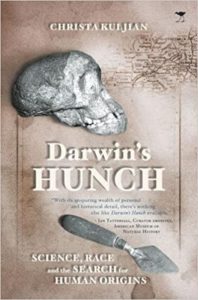 Darwin’s Hunch: Science, Race, and the Search for Human Origins, Christa Kuljian (Jacana Media).
Darwin’s Hunch: Science, Race, and the Search for Human Origins, Christa Kuljian (Jacana Media).
Scientists, and their research, are often shaped by the prevailing social and political context at the time. Kuljian explores this trend in South Africa and provides fresh insight on the search for human origins – in the fields of palaeoanthropology and genetics – over the past century. The book follows the colonial practice in Europe, the US and South Africa of collecting human skeletons and cataloguing them into racial types, in the hope that they would provide clues to human evolution. Kuljian sheds light on how, during apartheid, the concept of racial classification mirrored the way in which many scientists thought about race and human evolution.
 Murder at Small Koppie: The Real Story of the Marikana Massacre by Greg Marinovich.
Murder at Small Koppie: The Real Story of the Marikana Massacre by Greg Marinovich.
On 16 August 2012, a contingent of the South African Police Service opened fire with R5 assault rifles on a group of striking miners on and around Wonderkop near the Marikana platinum mine in South Africa’s North West province. By the time the dust settled, 34 miners were dead and 78 more were wounded. Footage of the massacre travelled around the globe, causing public outrage.
 My Own Liberator: A Memoir, Dikgang Moseneke (Picador Africa).
My Own Liberator: A Memoir, Dikgang Moseneke (Picador Africa).
In My Own Liberator, Dikgang Moseneke, recently retired Deputy Chief Justice of the Constitutional Court in South Africa, pays homage to the many people and places that have helped to define and shape him. In tracing his ancestry, the influence on both his maternal and paternal sides is evident in the values they imbued in their children – the importance of family, the value of hard work and education, an uncompromising moral code, compassion for those less fortunate and unflinching refusal to accept an unjust political regime or acknowledge its oppressive laws.
As a young activist in the Pan-Africanist Congress, at the tender age of fifteen, Moseneke was arrested, detained and, in 1963, sentenced to ten years on Robben Island for participating in anti-apartheid activities. Physical incarceration, harsh conditions and inhumane treatment could not imprison the political prisoners’ minds, however, and for many the Island became a school not only in politics but an opportunity for dedicated study, formal and informal. It set the young Moseneke on a path towards a law degree that would provide the bedrock for a long and fruitful legal career and see him serve his country in the highest court.
My Own Liberator charts Moseneke’s rise as one of the country’s top legal minds, who not only helped to draft the interim constitution, but for fifteen years acted as a guardian of that constitution for all South Africans, helping to make it a living document for the country and its people.
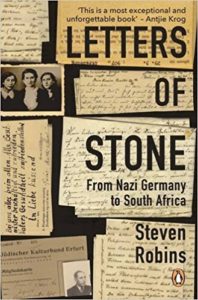 Letters of Stone: From Nazi Germany to South Africa, Steven Robins (Penguin Books).
Letters of Stone: From Nazi Germany to South Africa, Steven Robins (Penguin Books).
As a young boy growing up in Port Elizabeth in the 1960s and 1970s, Steven Robins was haunted by an old photograph of three unknown women on a table in the dining room. Only later did he learn that the women were his father’s mother and sisters, photographed in Berlin in 1937, before they were killed in the Holocaust.
Steven’s father, who had fled Nazi Germany before it was too late, never spoke about the fate of his family who remained there. Steven became obsessed with finding out what happened to the women, but had little to go on. In time he stumbled on official facts in museums in Washington DC and Berlin, and later he discovered almost one hundred letters sent to his father and uncle from the family in Berlin during the Nazi terror. The women in the photograph could now tell their story.
Letters of Stone tracks Steven’s journey of discovery about the lives and fates of the Robinski family, in southern Africa, Berlin, Riga and Auschwitz. It also explores the worldwide rise of eugenics and racial science before the war, which justified the murder of Jews by the Nazis and caused South Africa and other countries to close their doors to Jewish refugees. Most of all, this book is a poignant reconstruction of a family trapped in an increasingly terrifying and deadly Nazi state, and of the immense pressure on Steven’s father in faraway South Africa, which forced him to retreat into silence.
*
Congratulations to the five authors. The winner will be announced on 24 June.



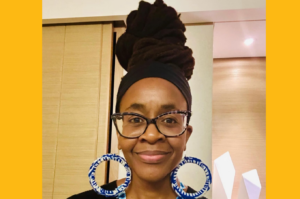


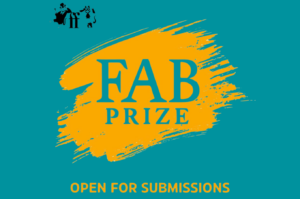


COMMENTS -
Reader Interactions